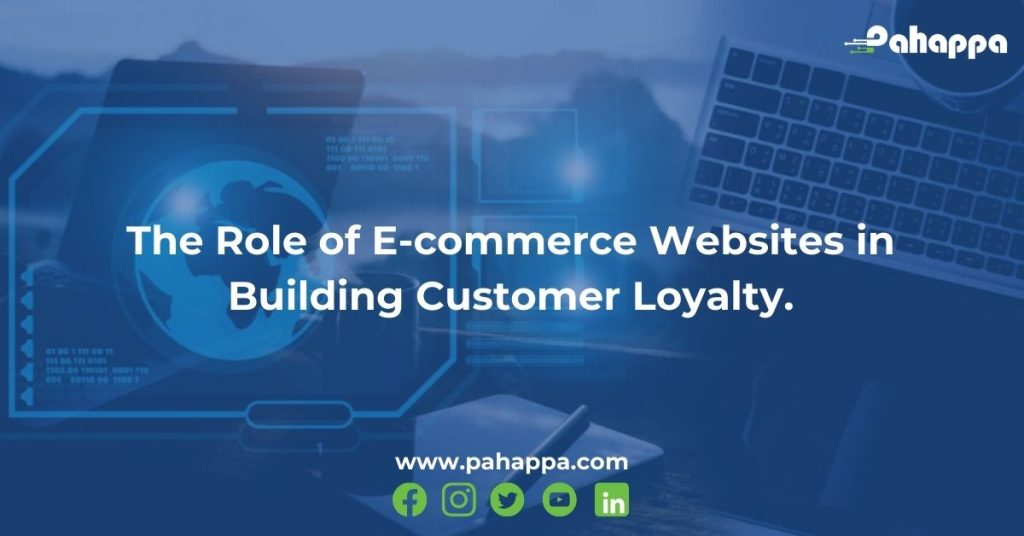
Today, where competition is fierce and online visibility is paramount, the significance of Search Engine Optimization (SEO) cannot be overstated, especially for e-commerce websites. With millions of products seeking attention, ensuring that your online store stands out from the crowd is crucial for driving traffic, increasing conversions, and ultimately, boosting revenue. And making sure that your website is optimized to appear relevant in every search engine keeps your store at an advantage.
SEO is the backbone of any successful e-commerce strategy. It involves optimizing your website and content to rank higher in search engine results pages (SERPs). This is so that relevant keywords and phrases that potential customers use can find products like yours. By improving your website’s visibility and organic search traffic, SEO helps you reach a larger audience and attract qualified leads actively seeking what you offer.
Ranking higher in search results means more exposure for your products and brand. Studies show that the majority of clicks go to the top results on the first page of Google, making it essential to appear prominently for relevant search queries.
Websites that appear at the top of search results are often perceived as more trustworthy and authoritative by users. By optimizing your site for SEO, you can build credibility and establish your brand as a leader in your industry.
Unlike traditional advertising methods, SEO targets users who are actively looking for products or information related to your business. This means that the traffic you receive from organic search is highly relevant and more likely to convert into sales. So as ;omg as you use the right keywords, you can get the right customers.
While paid advertising can drive immediate results, it requires ongoing investment and may not be sustainable in the long term. SEO, on the other hand, offers a cost-effective way to attract organic traffic to your site, providing long-term benefits and a higher return on investment (ROI) over time. For the most part this is better because you want to make sure that the traffic pulled to your website is organic.
Start by identifying relevant keywords and phrases that your target audience is likely to search for. Use tools like Google Keyword Planner or SEMrush to discover high-volume keywords with moderate to low competition.
Optimize your product pages, category pages, and blog posts with targeted keywords in strategic locations such as titles, headings, meta descriptions, and product descriptions. Ensure that your content is well-written, informative, and tailored to the needs of your audience.
Create a user-friendly site structure with clear navigation paths that make it easy for visitors to find what they’re looking for. Use descriptive URLs, organize products into categories and subcategories, and implement breadcrumb navigation to improve user experience and search engine crawlability. Also make sure yo can use a friendly design with high quality images.
With an increasing number of users accessing the internet on mobile devices, it’s essential to ensure that your e-commerce website is mobile-friendly. Optimize your site for mobile devices by using responsive design, optimizing page speed, and providing a seamless shopping experience across all devices.
Invest in creating high-quality content that provides value to your audience and encourages engagement and sharing. This can include product reviews, buying guides, blog posts, and informative articles related to your industry. Additionally, focus on building backlinks from reputable websites in your niche to improve your site’s authority and credibility in the eyes of search engines.
Regularly monitor your website’s performance using tools like Google Analytics and Google Search Console. Track key metrics such as organic traffic, keyword rankings, conversion rates, and bounce rates to identify areas for improvement and adjust your SEO strategy accordingly.
In conclusion, with the increasing number of online shopping, SEO is one of the best ways to drive traffic to your website. In order to be successful with this it is important to know your goal. What are you trying to achieve with an SEO plan? What kind of clients are you trying to attract? Analyze the keywords your ideal customer is most likely to use. And with this you will be on your way to getting the most out of your SEO plan. If you would like to know more about how we optimize our websites, click here to watch the video.

Inventory management systems play a critical role in optimizing the flow of inventory from warehouses to customers for manufacturers. Without IMS tools, companies would find it hard to know what to restock and when. Demand forecasting on products would also be an issue.
These systems utilize technology to efficiently track, manage, and control inventory levels throughout the supply chain. So if you are a manufacturer, it is easy to track and monitor your inventory flow and even predict how much you should restock in the future.
Here’s how you, a manufacturer, can use an inventory management system to optimize inventory flow:
Inventory management systems play a crucial role in optimizing the flow of inventory from warehouses to customers for manufacturers. Through technology, automation, and data-driven insights, manufacturers can minimize stockouts, reduce carrying costs, improve warehouse efficiency, and enhance customer satisfaction. If you would like to know more about Inventory Management Systems, Visit us here.

An e-commerce site is a virtual shop for your products. But it does not only serve as a shop. With an e-commerce site, you can build a community and hub of followers who move from just normal viewers of your site to loyal customers and brand ambassadors. And how do they do that? By building credibility and trust. Building trust and establishing credibility with your e-commerce audience is crucial for success in the competitive online marketplace. For one, it increases sales. It also builds your business as a long-lasting brand. Imagine all those e-commerce websites in Africa and the world that always attract even the least technical shoppers. How do they build their brands and build trust?
Here are some effective strategies to achieve this:
By implementing these strategies consistently, you can establish credibility with your e-commerce audience and differentiate your brand in a crowded marketplace. Building trust takes time and effort, but the long-term benefits are invaluable for sustainable growth and success. So get started with your own e-commerce website today. Click here.

You might be wondering if an Inventory Management System is for you. But if you distribute products of any kind, then tracking supplier orders and product flow is a priority to you. The IMS modules we offer 3 modules: Production, Inventory, and Shipping module. This system tracks products from their supplier raw materials to the delivery of the finished product to the consumer. Inventory management systems are essential for a wide range of businesses and organizations across various sectors. Here are some examples:
These sectors represent just a portion of the diverse range of businesses and organizations that benefit from implementing inventory management systems to optimize their operations, minimize costs, and improve customer satisfaction. To learn more about Inventory Management Software, Visit Us here.

The vast universe of e-commerce contains endless digital shelves and fierce competition. But one crucial element sets apart the giants from the transient. And that is customer loyalty. In an era where the consumer is exposed to a variety of options, businesses must not only attract but retain customers. So how does one create a pool of loyal customers? By building an interactive and navigational e-commerce website. Below are some of the ways e-commerce websites can help increase customer loyalty:
Picture this: a virtual store where navigation is intuitive, products are easily discoverable, and with an easy checkout process. Such is the hallmark of an e-commerce website that is committed to creating memorable shopping experiences. A customized e-commerce website enables users to enjoy the shopping experience at every touchpoint with benefits like responsive design to lightning-fast load times.
Trust forms the bedrock of any enduring relationship, and the digital realm is no exception. E-commerce websites act as guardians of trust, ensuring secure transactions, transparent pricing, and seamless customer service. Let’s be honest, by the time you are willing to give your bank account information you trust the company well enough at least to know that they can deliver. With robust encryption and stringent data protection measures, customers can shop with peace of mind, knowing their sensitive information is safeguarded.
With loyalty comes rewards, and e-commerce websites are masters of this. Through innovative loyalty programs and rewards schemes, businesses incentivize repeat purchases and brand advocacy. we have all shopped from sites that offer a variety of discount policies like Shein. Aliexpress for example limits your fist purchase on the site but refusing you to exceed a certain amount of money. Whether it’s earning points with every purchase, unlocking exclusive perks, or receiving personalized recommendations, customers feel valued and appreciated—a powerful catalyst for loyalty.
Customer support serves as the guiding light for lost souls and the solace for troubled hearts. E-commerce websites excel in providing prompt, personalized support across multiple channels, be it live chat, email, or phone. By addressing queries and concerns with empathy and efficiency, businesses not only resolve issues but also forge deeper connections with their customers. Knowing that there is someone ready to help you get the best out of your shopping experience is enough motivation for you to shop there again.
Data is the lifeblood of the digital age, and e-commerce websites are the conduits through which it flows. By harnessing the power of analytics, businesses gain invaluable insights into customer behavior, preferences, and purchasing patterns. Armed with this knowledge, they can tailor marketing efforts, personalize recommendations, and anticipate future needs—laying the groundwork for enduring loyalty.
In the interconnected web of cyberspace, e-commerce websites serve as hubs of community and connection. Through engaging content, vibrant social media channels, and interactive forums, businesses foster a sense of belonging among their customers. Some sites have pages dedicated to customer reviews with videos that User Generated Content buyers can post on their social media platforms. By nurturing these virtual communities, e-commerce websites transcend mere transactions, becoming catalysts for shared experiences and collective engagement.
To conclude e-commerce websites offer a great deal of satisfaction that many physical shops would even dream of achieving. And the best part is, you don’t have to leave the comfort of your own couch to make a sale. So why not set up a customized online shop today? Visit us at Plot 163, Mutesa 2 Road, Ntinda, Kampala to get started on your e-commerce website.

As a business owner seeking to improve your inventory operations, having an Inventory Management System must be a very attractive feature to incorporate into your business. And you are not alone. The adoption of IMS is on the rise globally. A study by Grand View Research forecasts that the global IMS market will reach $5.2 billion by 2025, with a compound annual growth rate (CAGR) of 6.8% from 2020 to 2025.
But what exactly is an Inventory Management System?
An Inventory management system is a software platform that tracks and monitors your inventory and stock, making it easy to report on how much produce you have brought in, how much stock you sold, and how much stock/ raw materials you will need in the future. With an IMS, companies can monitor how much they are putting into the business (production) and how much is coming out to sell to sell to the final customer (stock). Because warehouse storage is vital when companies need to store stock while awaiting customer demand, it becomes important for companies to monitor what stock will be going in and out of each warehouse at each particular location. Inventory management system technology is significantly reshaping warehouse operations by introducing automation, efficiency, accuracy, and optimization into the process of handling inventory.
Here’s how:
So now that you know how Inventory software can help automate your warehouse operations, why not procure one today? Visit us at this location to get a quote or call us to find out more.
Copyright © 2024 Pahappa. All rights reserved.